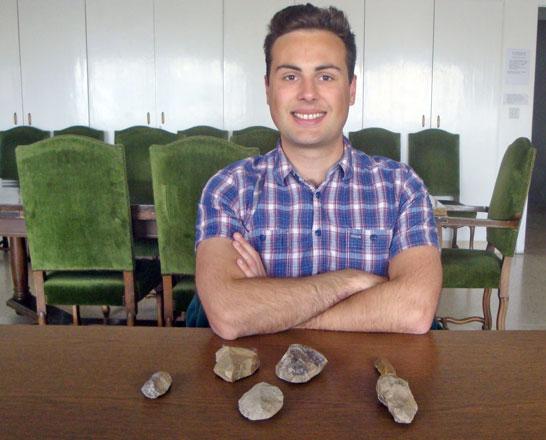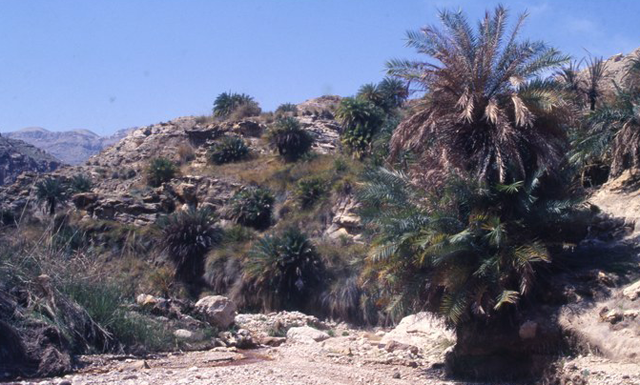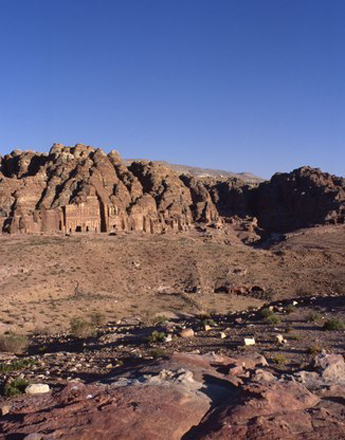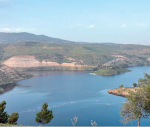You are here
Tracing Jordan’s Prehistoric past: Archaeological findings in Tafileh
By Saeb Rawashdeh - Feb 08,2025 - Last updated at Feb 08,2025

Natufian scrapers found in the Petra Hinterland (Photo courtesy of ACOR)
AMMAN — Archaeological teams studied the area near Tafila and many Paleolithic localities were examined by members of different scholars. One of the areas was near Jurf ed-Darawish and the Wadi Juhayra/Qusayr, in the south.
“The site, which abuts a large basalt flow associated with Jabal Juhayra, was initially described as a dense lithic scatter covering an area of 20m x 40m on the north bank of the Wadi Qusayr, a small wadi that drains into the Wadi Juhayra,” said Mike Neeley from Montana State University.
Neeley added that surface artefacts included microliths, bladelet cores, and micro burins, all of which are consistent with a Late Epipaleolithic or Natufian occupation.
“Reassessment of the site size in 2006 identified surface materials scattered along an E-W axis paralleling the wadi with overall dimensions of roughly 100 m (E–W) x 50 m (N–S) for an area of 5,000 m2. One of the striking aspects of this site is its association with other Late Epipaleolithic sites along the wadi,” Neeley explained.
He added that survey along both sides of the wadi identified eight additional sites that contained Late Epipaleolithic material remains.
"This cluster of Late Epipaleolithic remains is somewhat unusual as sites from this time range are usually more widely scattered. In the case of the TBAS sites, the use and reuse of the area is probably the result of greater resource availability associated with paleo-environmental conditions very different from the present. "
“Following the survey, test excavations were undertaken in 2006 at TBAS 102 and 212 and the smaller of the two sites, TBAS 102 measured approximately 15 x 20 m. The excavations at TBAS 102 exposed an area of 4 m2 to an average depth of 35 cm below the modern surface,” Neeley underlined.
He said that this resulted in the recovery of more than 9000 pieces of chipped stone along with limited quantities of fauna.
"Furthermore, the small size of the lunates and the absence of Helwan retouch also square [or agree] with a Late Natufian temporal affiliation. Given the exploratory nature of the excavations, materials were removed in 10 cm levels and screened through a .33 cm mesh."
"This enabled the recovery of shell beads, microlithic tools, and small pieces of lithic debitage," Neeley elaborated, noting that these test units yielded a very high quantity of lithic materials (over 22,000 artefacts)."
In addition to the lithic materials, fauna, shell, and ground stone were recovered from the excavations. It is worth noting the excavation of a previous test unit in 2004 by a Japanese scholar Sumio Fujii focused on the southern edge of the site disturbed by modern digging.
Fuji described the presence of thick (ca. 30 cm) ashy deposit in this area along with fauna (primarily gazelle), microlithic artifacts and ground stone implements.
"Given the size of the site [his estimate was ca. 1,000 m2] and the abruptly backed lunates, he suggested that it functioned as a Late Natufian base camp," Neeley said, noting that the excavation in Unit 2 proceeded in four levels reaching a depth of 40 cm below the ground surface.
The excavations at TBAS 212 reinforce the importance of the wetland/marsh ecological base for Natufian settlement in west-central Jordan, the scholar said, adding that the site location near this resource in the Wadi Qusayr follows the pattern established for the Early Natufian in the Wadi Al Hasa to the north.
"The size and density of material at TBAS 212 indicate intensive and/or repeated settlement of the site during the Late Natufian. A lingering question from this work is the date of the occupation."
"The typological assignment to the Late Natufian seems secure, but how the cold, dry conditions of the Younger Dryas affected the occupants remains uncertain. Did occupation of the site cease with the onset of the Younger Dryas or did the wetland environment continue to be productive and serve as a refuge for these foraging populations ?" Neeley speculated.
TBAS 212 is a key component to understanding how these Late Natufian populations adapted to changing conditions and the site continues to have much potential for addressing these issues.
"To conclude, it is worth revisiting the initial impetus for this research—MacDonald’s surveys in west-central Jordan. Without these broad, temporally inclusive survey projects, we would have had a much impoverished understanding of the Paleolithic archaeology of the region," Neeley underscored.
Related Articles
AMMAN — Hundreds of thousands of miniscule stone flakes, some only millimeters in length, the scattered results of the hammering and bashing
AMMAN – Climatic changes directly affected resource availability, which in turn necessitated a change in the land use strategies, said the A
AMMAN — Brigham Young University from Provo initiated Wadi Mataha project in Petra and they tested the theory generated from the previ



















